Tuesday October 7, 2025

Anuvu and LeadStory team up to keep plane crash stories off inflight news
Passengers will soon be able to stay informed mid-air without being bombarded by stressful or irrelevant headlines, thanks to a new partnership between inflight entertainment leader Anuvu and news streaming platform LeadStory.
The deal, announced this week, will see AI-curated global news content from outlets including CBS, Bloomberg, Reuters and Euronews integrated into Anuvu’s entertainment portfolio from October 2025
Tailored news at 30,000 feet
Rather than offering a one-size-fits-all news feed, LeadStory’s AI tech allows airlines to customise what passengers see… and what they don’t.
“It’s understandable many viewers would prefer not to see certain sorts of stories while flying, including aviation incidents,” LeadStory CEO Cam Price told Mediaweek.
“Instead, see the latest breaking headlines, business coverage and travel stories. LeadStory provides both the ability to include categories and remove them from our newsfeeds. And for the end-user, a curated experience that offers peace of mind they won’t see anything that might make them feel uncomfortable.”
David Horan, content acquisition and partnership manager at Anuvu Distribution, said the collaboration redefines what it means to stay informed in the air.
“Air travel should leave passengers feeling informed, not overwhelmed, and by working together, we’re redefining how news is delivered onboard, making it smarter and more personal to every passenger’s journey,” he said.
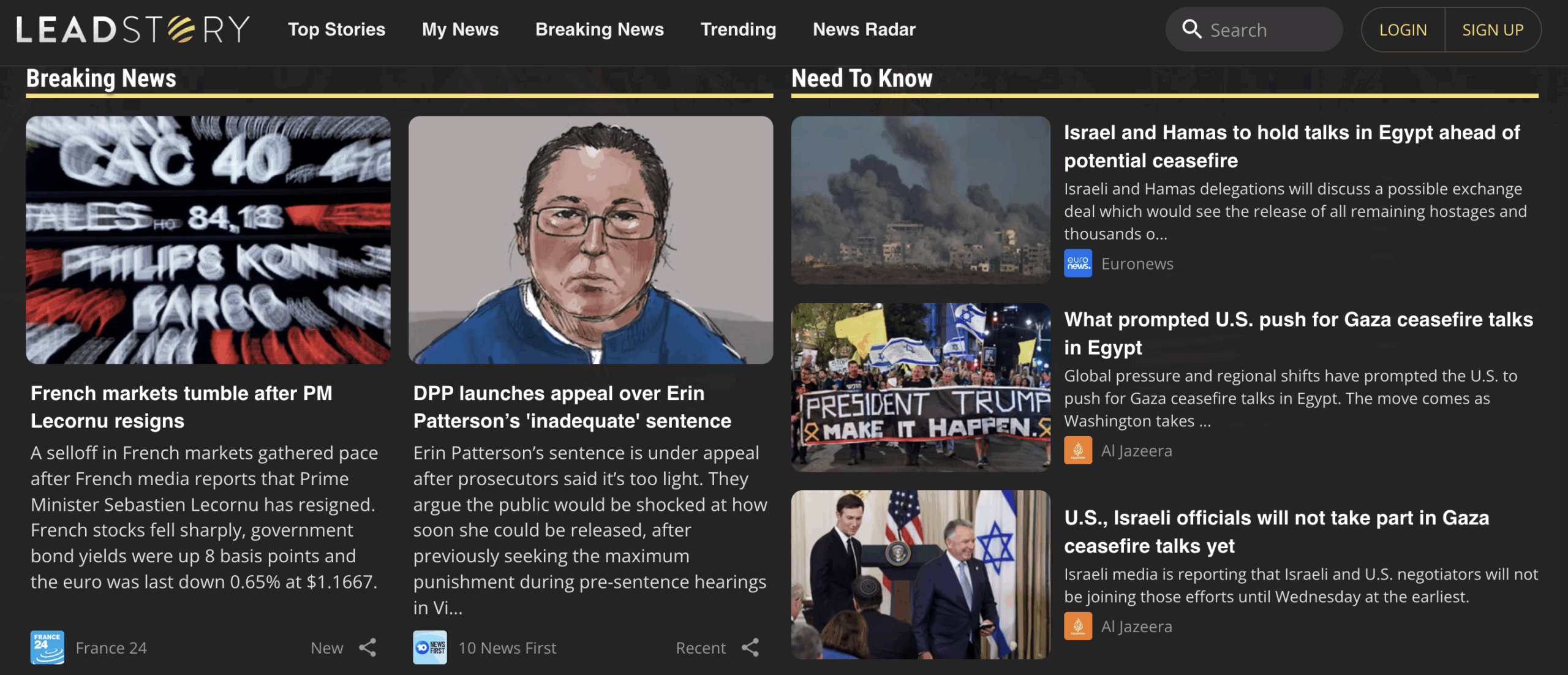
A global platform on the rise
Price said the partnership came together organically.
“We’re at a stage of the business where new partners, having seen the rapid rise of our platform globally, are coming to us, and this has been the case with Anuvu,” he explained.
“It’s a nice moment for us; we’re now providing fully personalised feeds to airlines, car makers, mobile phones, TV OEMs, meaning you can now access LeadStory in the air, on the road, at home or on the move.”
So, what sets LeadStory apart from other news platforms? “A few things,” Price said.
“First, we aggregate licensed content from dozens of trusted publishers around the world so have every piece of news, from every corner of the globe, covered.
“Secondly, at our heart, we’re a technology business. Our platform allows us to create a unique feed based on category, publisher, even language. Which is perfect for in-flight consumption,” he said.
The future of AI and news
As AI continues to reshape how people consume information, Price believes its role in journalism will be profound, but complementary.
“I think AI will completely transform broadcast news, but not in the way most think,” he said.
“I still believe we need human journalists on location, asking real questions and delivering authentic, hallucination-free coverage. But AI will package up that story and others into a completely unique feed for each and every viewer, your own personal news bulletin that understands what you care about and instead of a feed, will be delivered as a conversation,” he explained.
It’s a future that could make air travel just a little bit smarter… and a lot more peaceful.

Australians are paying to stream more now than ever before. And in a shock: we’re all pirating less.
Ignore that guy you were chatting to at that BBQ on the weekend who boldly claimed that people are pirating TV and movies again now because the cost of subscribing to all those streaming services is too expensive. The numbers suggest a very different reality.
Australians are not only paying more for their streaming services, but they are also subscribing to even more of them.
This has to be good news for Apple, which is reportedly set to raise streaming prices later this week to $15.99 per month. That puts it at the same price per month as standard plans for HBO Max and Disney+.
Each year analyst firm Telsyte releases its Subscription Entertainment Study. It is an annual report that goes deep into which services Australians are paying for and how much they are paying. The firm has been doing it for a number of years now, providing great trending data about Australia’s investment in streaming video.
In the 2025 report, which Telsyte is yet to publicly make available online, but has been reported on by the AFR, the firm reports that in the past 12 months the average budget for video streaming has jumped a whopping 18 per cent to $42 a month.
While some will look at that figure and just attribute it to the price increases we have all noticed being made by all of the streaming services we use, that figure is actually higher than the 13 per cent hike passed on to customers by the top 10 streaming services.
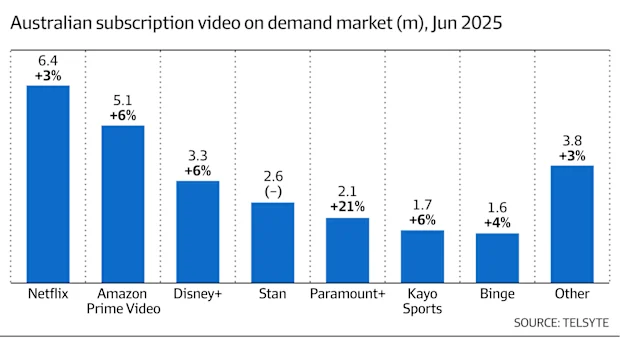
The big winner in the local market appears to have been Paramount+, which saw a massive 21% increase in subscribers over the past year. Increases in single digits were recorded across the board, with Netflix and Prime Video leading the market.
In the past year, Australia has seen substantial changes in the local industry, with the launch of HBO Max in March of this year, the introduction of ad-supported tiers on several leading platforms, and substantial discounting from some services.
Amid that upheaval, we are spending more.
As per Telsyte, Australians now spend $3.8 billion per year. That is up 9 per cent. We have 26.6 million video streaming accounts in total, up 5 per cent. And per home, on average we have 3.3 active paid accounts at any one time.
Telsyte does report that 46 per cent of streaming users are rotating between services to keep costs down. And around half of Australian streamers are actively seeking discounted deals and subscribing for specific content, cancelling once it has been watched.
What we aren’t doing is pirating.
This isn’t Australia-specific data, but considering global trends, it is likely that Australian behaviour is similar. When data company MUSO released its 2024 Piracy Trends and Insights report, it found that there was a decline in piracy from 2023-2024. This has been a trend for several years now. The only category globally that have seen increases has been anime.
TV piracy has decreased 6.8% year-on-year, while film piracy has dropped 18% year-on-year.
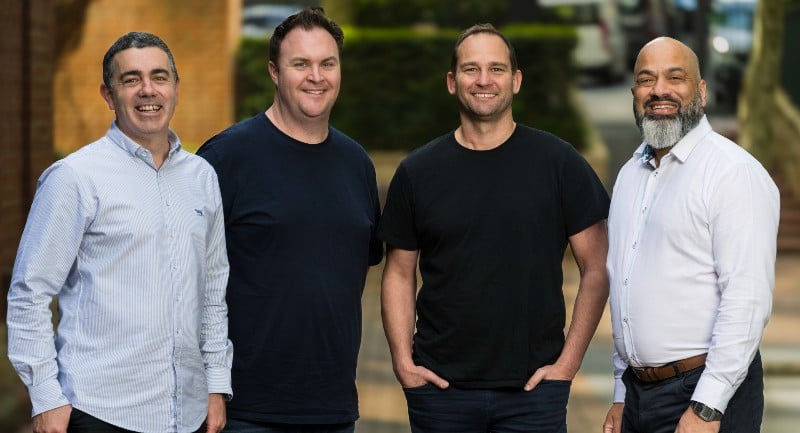
Choosing the right creators for your campaign: Fabulate’s SparQ 2.0 has new AI tools to help marketers find the right talent
Fabulate has launched SparQ 2.0, an expanded version of its AI-powered influencer marketing suite, adding five new tools aimed at helping marketers improve decision-making, brand safety, and creator discovery.
The tools are there to help meet the promise of SparQ 2.0, which is to make it easy to find insights into the creator marketplace and give prospective agencies seeking to work with talent the ability to determine if talent is a good fit for their message, the metrics to back-up claims about audience engagement, and to identify any brand safety concerns.
Ultimately, it is about speeding up the process: “It is still a real bugbear for the clients… how you can move all of that creative content through approvals towards getting it live and driving business outcomes as quickly as possible,” Nathan Powell told Mediaweek. Powell is Fabulate’s Chief Product and Strategy Officer. “Creator marketing is unlike any other category. There’s so many more steps in that daisy chain.”
“We obviously identify as an AI-led creative marketing business and that gives us the completest picture of this category, setting us apart from everyone else. We’re media people, not tech people, coming in to solve a media problem.”
The platform, used by major brands across finance, retail, travel and telco, has now introduced agentic AI tools named Lens, Compliance Check, Echo, Quality Control and Scout. Together, these tools allow users to gain deeper insights, automate compliance, track social trends, and better understand campaign performance—without needing advanced data skills.
Launched almost 12 months after the original suite, SparQ 2.0 aims to tackle common pain points in influencer marketing, including unclear performance metrics and time-consuming approvals. Research from Influencer Marketing Hub (2024) found that 53 per cent of brands struggle to measure campaign success, and 78 per cent lack automation systems to analyse creator campaign data.
“We’ve got access to 320 million creator profiles across Instagram Tik-Tok and YouTube,” Powell said. Obviously, he is talking about creators globally, with Fabulate currently in 12 countries globally, serviced by a team of 76 professionals. In Australia and New Zealand, that works out to be about 1.2 million creator profiles.
“It’s the one of the vastest data sets, if not THE, vastest data sets of creator data available for marketers to be able to work on their campaigns.”
Mediaweek was impressed by the capability to image search the database to find creators already talking about specific products.
As Powell explained: “We recently did this for an auto brand for a particular model car. We were able to upload that model car picture and then discover creators that already had that car. The logistics for a brand doing that it means you don’t need to go and organise test drives and insurance. They are now in the hands the creator – it becomes much faster.”
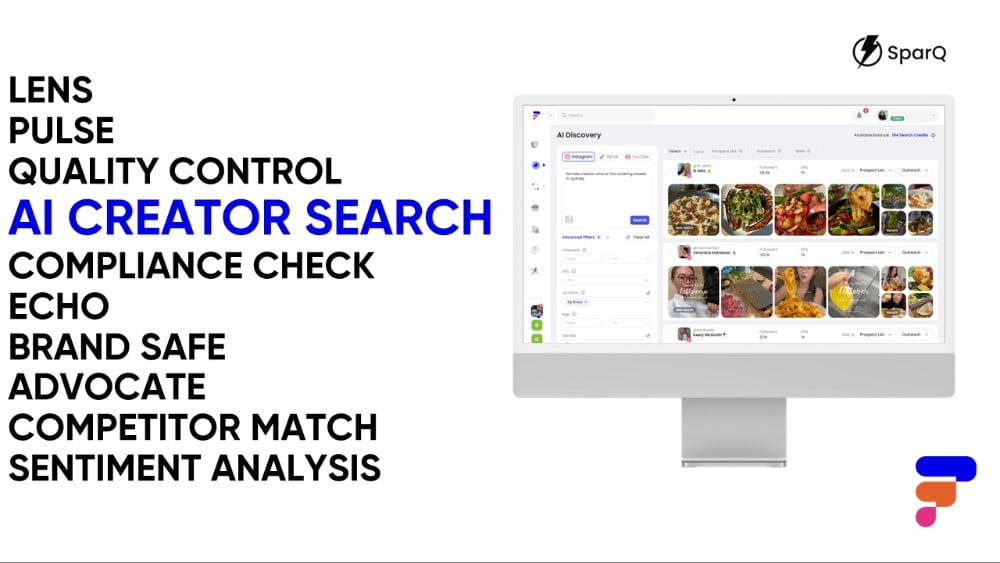
What’s new in SparQ 2.0
• SparQ AI Creator Search: A visual and text-based tool that lets users describe the type of content or creator they need in plain language or by uploading an image, returning relevant matches instantly.
• SparQ Lens: An AI analytics assistant that lets marketers ask questions in natural language and receive visualised insights and strategic takeaways from campaign data.
• SparQ Compliance Check and QA: Designed for industries like finance and health, this tool reviews influencer content for regulatory and brand guideline compliance before it goes live, streamlining approvals and reducing legal risk.
• SparQ Echo: A TikTok-trained trendspotting tool that helps brands identify the formats, sounds and topics gaining traction in their niche.
• SparQ Scout: Offers a diagnostic overview of a brand’s social performance, including share of voice, competitor benchmarking, and content strategy insights.
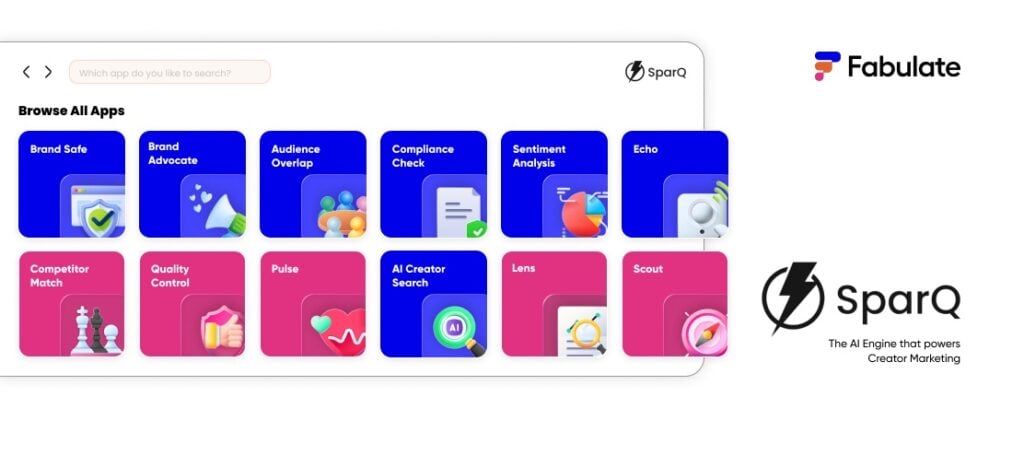
Finding the hidden skeletons
An invaluable brand safety tool SparQ 2.0 offers is the ability to perform due diligence on creator talent being used with searches for prior relevant content. Powell made mention of an anti-vaping campaign that was upended when it was revealed that creators in the campaign had previously filmed content with them vaping. This was despite the talent signing declarations that they hadn’t posted vaping content in the past.
In Asia where Fabulate clients are often concerned about ‘modesty standards,’ searches are often done to find content related to things like alcohol consumption.
Powell explained that this sort of search can be done before signing creators onto a campaign: “Shortlist your creators even further so that you know, not necessarily where all the skeletons are, but for any perceived brand safety risks that might be an issue for your brand. They’re automatically flagged ahead of time for review.”
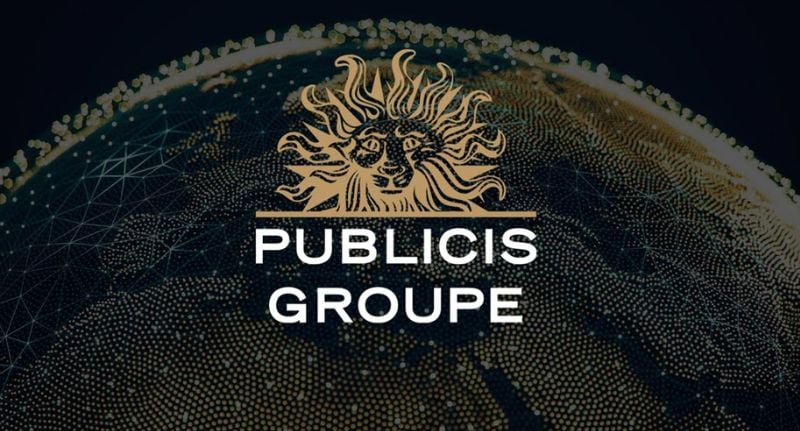
Publicis Media tops global new business rankings for H1 2025
Publicis Group has taken the top spot in COMvergence’s H1 2025 Global New Business Barometer, clocking an impressive US$6 billion in new client billings, far outpacing its competitors and underscoring the group’s dominant run in global media pitches.
According to the report, Publicis Media led both Total and Net New Business results, with wins including Coca-Cola (US$835 million) in North America and eight global accounts: Barilla, Dropbox, Goodyear, LinkedIn, Mars, Paramount, PayPal, and Santander.
The group also posted the highest retention rate among the Big 6 holding companies, holding onto 63% of its billings under review.
Trailing behind, Mediabrands ranked second with US$1.5 billion in new business, driven by strong U.S. performance, while OMG came in third thanks to global consolidations like Kimberly-Clark (ex-North America) and Zurich Insurance.
In contrast, WPP Media was the only holding group to post a negative result, both including and excluding retentions, a sign of a tougher first half for the London-based giant.
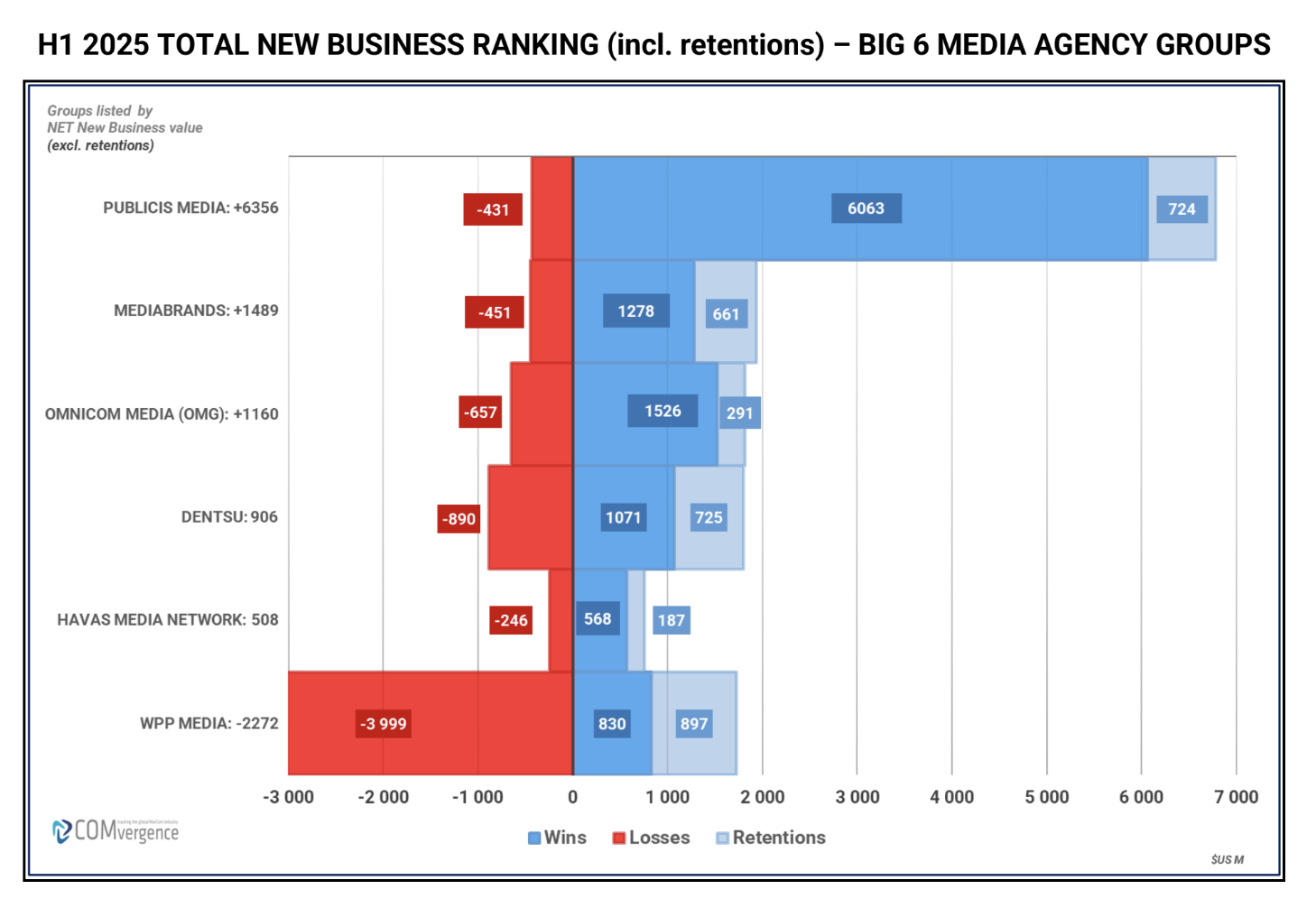
Initiative leads at network level
At a network level, Initiative ranked first globally, recording US$1.4 billion in new business, powered by US wins including Paramount Network (US$450 million) and Anthropic.
Spark Foundry followed with key account consolidations such as Abbott (US$400 million) and the global win of LinkedIn (US$180 million), while Zenith came in third after successfully defending PepsiCo in China (US$225 million) and picking up PayPal in the U.S. (US$450 million).
COMvergence said the top three positions remained unchanged in Net New Business rankings, measuring wins minus losses, showing stability at the upper end of the competitive agency field.
A hyperactive global pitch market
The report tracked nearly 1,840 media account moves and retentions across 49 countries, involving 1,195 advertisers and totalling US$17.6 billion in reviewed spend, up 7% from the same period in 2024.
The US accounted for 45% of total spend, while China contributed 11%.
Local reviews represented the majority at 61% of spend, with global and multi-country reviews making up US$6.9 billion.
COMvergence noted that the overall retention rate dropped to 19%, the lowest in eight years, signalling a highly volatile market where even established agency relationships are under pressure.
Independent agencies also made a strong showing, capturing US$2.9 billion (16%) of reviewed spend.
Standout wins included Spectrum (Horizon Media, US$800 million) and Peloton (US$225 million). Notably, Accenture Song secured its first major media win in Australia with Optus (US$45 million).
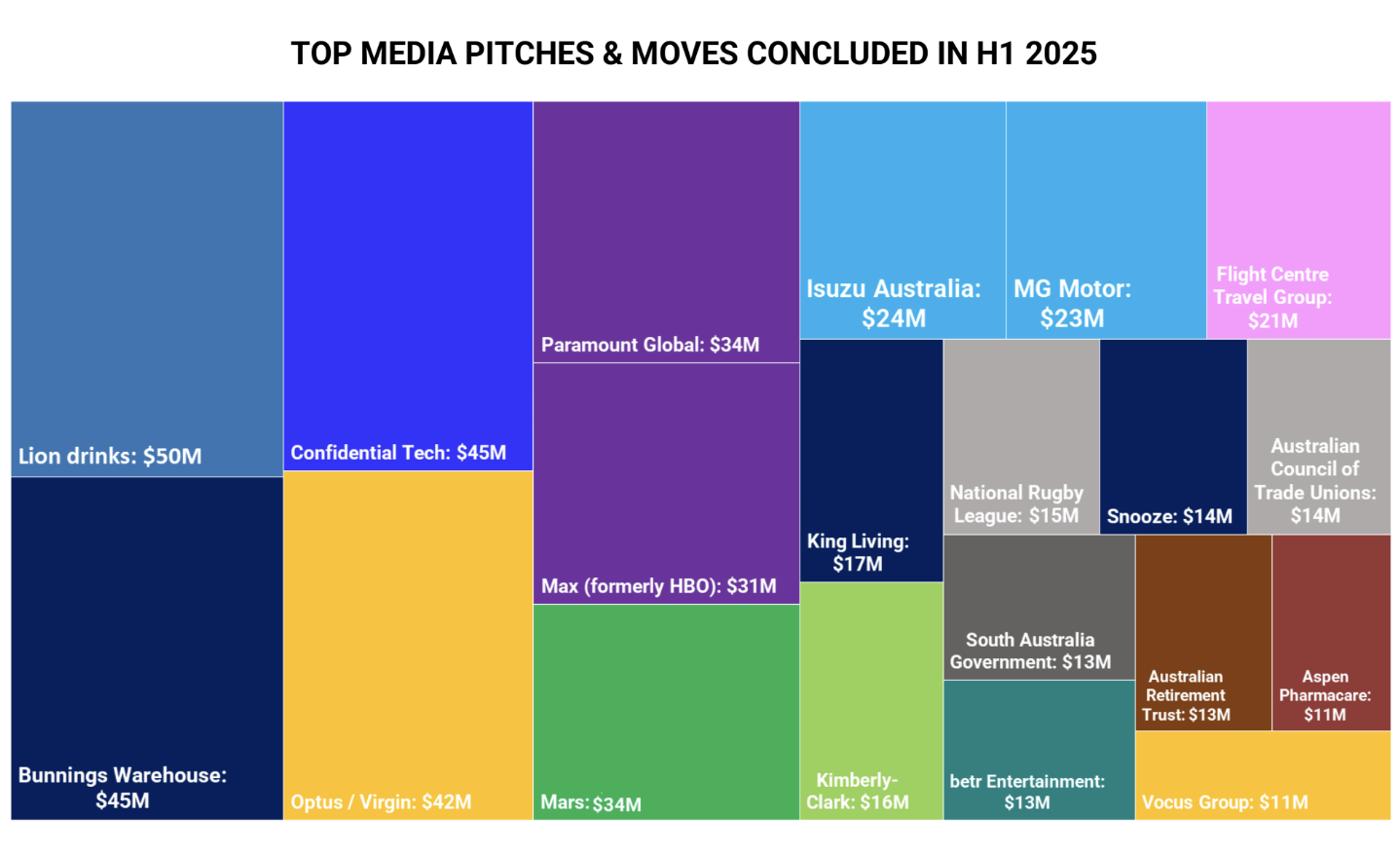

“Skipping those calculations can come back to bite you” – The marketing equation that cost us $300,000
Written by Evgenii Kuznetsov, founder of CATCH Tech and CMO at affiliate marketing agency 2QL Corp
Even data-driven marketers make calculation mistakes sometimes, and in our case, it was a mistake worth $300,000.
As a marketer with a tech background, I’ve always believed that a numbers-first approach to marketing campaigns, ensuring measurable customer conversions, is the only possible one. That’s why at CATCH Tech, we often work on a cost-per-sale model. But not all misstep comes from the marketers’ side; a miscalculated budget at the outset can lead to disappointing results and tense conversations. That’s exactly what happened to us.
In early 2025, we faced a $300,000 setback due to an oversight in marketing economics calculations and performance metrics. The situation was further complicated by gaps in communication with the client – a customer relationship management platform for email marketing – which made resolving the issue more challenging.
Here’s how the situation developed and what we learned along the way.
The client
In January, we signed an offer agreement for traffic acquisition services with a SaaS company that provided a full suite of email marketing solutions. As one of many contractors, our job was simple on paper: bring high-quality leads, each verified by a completed contact form on the client’s side. Our payment wasn’t tied to strict KPIs – as long as the client’s feedback was positive, we kept running campaigns.
All acquisition channels were set in advance: content sites, push notifications, email, and affiliates. Here’s a catch: when you hire a contractor, it’s critical to factor in everything that could impact performance – traffic costs, expected conversion rates, even seasonal trends. Skipping those calculations can come back to bite you, as we soon found out.
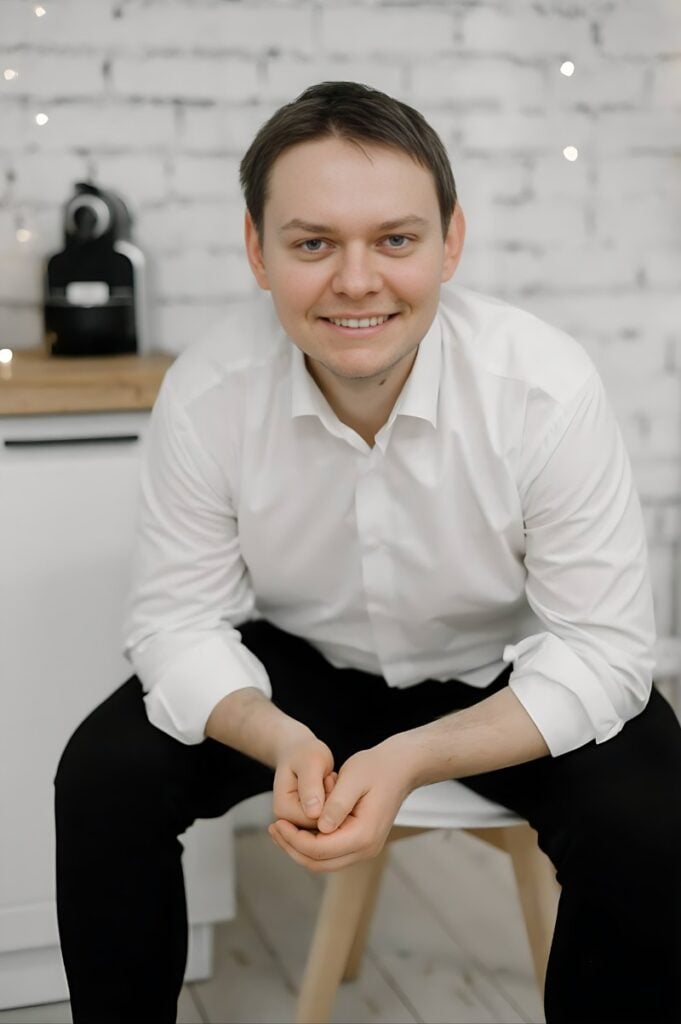
Evgenii Kuznetsov
After a short trial, we started from scratch, and the results looked great. Starting from 531 leads in January, we tripled that to 1,645 in February, and by March were closing in on 3,000. Reports went out, the client’s feedback was positive, and everything looked smooth. But in hindsight, there were early warning signs we should have paid closer attention to.
The problems
The first red flag should have been the client’s refusal to implement bot detection. Managing multiple contractors without traffic filters is like flying blind – especially when more than half of today’s internet traffic comes from bots. The risk of wasting budget and attracting malicious traffic is simply too high. Even after we warned them about the potential consequences, the client chose not to act.
The real trouble came at the end of the quarter, just as our payment was due. After three months of smooth collaboration and consistent positive feedback, the client suddenly shifted gears, claiming they were dissatisfied with the results, and then cut off all communication. Every attempt we made to clarify or resolve the issue was met with silence.
Eventually, they resurfaced. But instead of opening a dialogue, they sent over a revised terms sheet. This new document gave them the right to block contractor payments without explanation, effectively nullifying our previously signed agreement. Despite repeated attempts to re-establish communication, nothing changed. Our $300,000 was lost for us.
Based on our experience, when multiple contractors were involved and no bot protection was in place, we suspect that it opened the door to unethical behavior that could distort results – and not in our favor. The fact that our leads were fully qualified through contact forms, and that no negative feedback was given during the process, supports this assumption.
We could chalk this up to miscommunication, or even deliberate fraud. But instead, we treat it as a case study and a reminder of why accurate marketing economics, clear ROI tracking, and strong safeguards matter – and how overlooking them can lead to costly mistakes.
Marketing economics mistakes and how they could have been avoided
Here are five costly mistakes we made and the lessons learned:
Attribution Errors
More traffic doesn’t always mean more conversions. Spikes of activity can hide irrelevant leads or bot activity, often from ads, affiliates, or referrals. As a result, a successful campaign on paper blows real marketing budgets with little to no benefit.
To avoid it, use separate analytics systems and maintain full transparency on traffic sources to keep metrics accurate and clean.
Oversimplified KPIs
We were measured only on cost per acquisition. Ignoring traffic quality, conversion rates, and lifetime value meant the campaign failed to meet business goals. As a contractor, educate your client and define layered KPIs upfront – from strategy to operations. Multiple metrics give a fuller picture and help catch issues early.
Ignoring Fraud
Fraud, bots, and inflated traffic can quietly drain budgets and distort ROI. Without proper filters, even strong campaigns deliver little real value. Use bot tracking, secure sources, and monitor traffic quality with tools like device fingerprinting or IP analysis.
No Testing Period
Jumping straight into a full contract adds risk. A short trial could have revealed traffic quality and ROI potential before scaling. To avoid potential losses, start with a test period to measure conversion rates, customer acquisition cost, and engagement. Use that data to optimize and reduce exposure.
Lack of Clear Communication
Finally, the biggest failures aren’t always technical – they’re human. When agencies and clients don’t align on expectations, tolerance ranges, or contract terms, disappointment is inevitable, and it’s far harder to fix than broken campaigns. Discuss all critical points upfront and carefully review contract terms.
Conclusion
Losing $300,000 was painful, but the bigger cost would have been failing to learn from it. If you’re a contractor, don’t rely on handshake optimism. Protect yourself with layered KPIs, strict testing, fraud checks, and airtight contracts. If you’re a client, honor transparency with transparency. And, of course, educate your clients – otherwise, by the payment due date you may end up with a conflict and a zero on the balance.

From static to smart: The role of AI in the next era of DOOH
By Matthew Bushby, Managing Director of ANZ & SEA, Perion
Perion (formerly Hivestack) has been operating in Australia and New Zealand for more than six years, and from the very beginning, artificial intelligence (AI) has been central to how we plan and activate Digital Out-of-Home (DOOH) campaigns.
What started as machine learning and data science quietly working in the background has now become one of the biggest forces reshaping outdoor advertising.
AI is transforming DOOH from a one-way broadcast channel into a data-driven, accountable, and interactive medium. By bridging the precision of online with the scale of offline, AI is bringing new levels of measurability, efficiency, and creativity to the sector.
As we look at the evolution of this space, several key areas highlight how AI — and in particular, dynamic creative optimisation (DCO) — is redefining what’s possible in DOOH.
Audience Targeting & Personalisation
AI enables advertisers to reach the right audience at the right moment. Computer vision can estimate demographics such as age, gender, or mood to inform more relevant ads in real time, something already in practice with some APAC publishers.
Perion’s own models combines location data (via 3rd party providers), traffic flows, and contextual cues such as time of day, weather, or events to predict audience presence and optimise delivery.
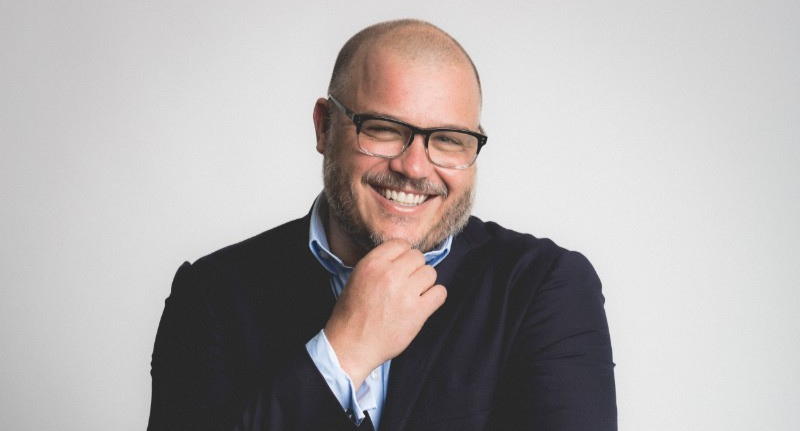
Matt Bushby
Dynamic Creative Optimisation (DCO)
Dynamic Creative Optimisation harnesses AI by turning static creative into a living asset. Messages can adapt automatically to aggregated audience profiles or external triggers, from sports scores to traffic congestion.
Generative AI expands possibilities further, producing multiple creative variants, including 3D formats for rapid testing. The result is storytelling that evolves with the moment, maximising engagement.
Smarter Programmatic Buying
Programmatic DOOH buying is strengthened by AI ensuring ads appear only when and where audiences matter. Within the Perion exchange, real-time bidding uses predictive analytics to forecast foot traffic and audience concentration. Machine learning then distributes budgets intelligently across screens, improving efficiency and ROI.
Contextual Relevance
Ensuring a campaign remains relevant is crucial in today’s marketplace, and with AI, campaigns can be delivered at the right time, in the right place, and to the right audience. Weather-triggered ads on cold mornings or live sports updates are great examples of how contextual relevance drives impact.
A recent nib campaign in New Zealand showcased this in action, with creative adapting in real time to Blues rugby matches — from pre-game messages, to live score updates, to post-match reactions. By syncing with the game environment, the campaign turned DOOH screens into timely and engaging fan touchpoints.
Measurement & Accountability
Marketers demand proof of impact, and AI delivers stronger attribution. Computer vision combined with mobile data can estimate impressions, while AI models connect DOOH exposure with outcomes such as website visits, app installs, or store sales. Incrementality testing isolates DOOH’s unique contribution within the media mix, giving advertisers the accountability they need.
Operational Efficiency
AI improves not only performance but also operations: automated scheduling to reduce waste, computer vision to detect malfunctions, and energy management to optimise brightness and cut costs. These efficiencies make DOOH more sustainable as well as more effective.
Looking Ahead
At Perion, AI is embedded in everything we do — from planning to activation to measurement. Our focus remains on empowering buyers and brands with smarter creative, faster planning, and clearer performance insights — ensuring DOOH delivers accountability, adaptability, and impact at scale. We are also enhancing transparency through better reporting and analytics.
DOOH has always delivered reach and impact. With AI and DCO, it now delivers precision, accountability, and adaptability. The billboard is no longer static — it is becoming a responsive, measurable, and interactive channel. And this is just the beginning.
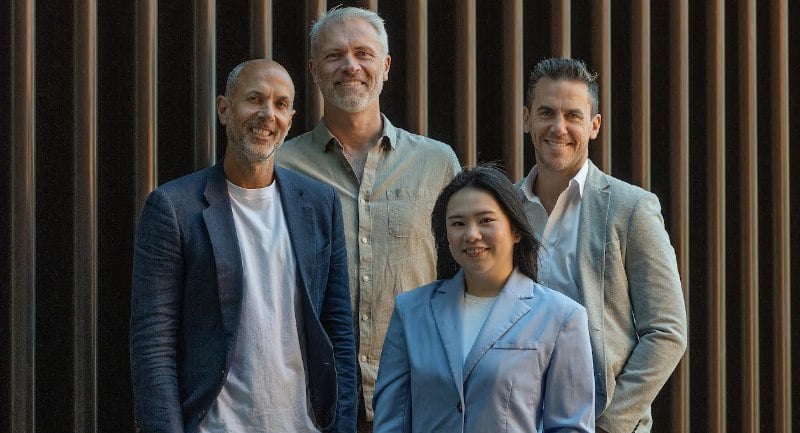
CulturalPulse strengthens client leadership with appointment of Rohan Nayee
Independent multicultural marketing and media agency CulturalPulse has appointed Rohan Nayee as Client Services Director, expanding its leadership team to oversee client partnerships and delivery across government, sport, arts and commercial brands.
Nayee brings 20 years of experience across both agency and brand-side roles in London and Sydney, including senior positions at WPP, Omnicom Group, Marley Spoon and Pernod Ricard.
The appointment expands CulturalPulse’s client service capability and reflects its continued investment in building a client-centric model to support its next phase of growth.
Nayee said he was drawn to the agency’s mission to help brands connect with diverse audiences through authentic engagement. “CulturalPulse has built a reputation for helping brands engage diverse communities with real intelligence and trust,” he said. “At a time when cultural relevance is critical to both brand growth and social impact, it’s a mission I feel deeply connected to.”
The client service team now includes three dedicated specialists: Gabriella Angel, Communications and Campaign Manager; Jake Swarts, General Manager – Client Delivery; and Nayee. Together they deliver client excellence across CulturalPulse’s broader offering in strategy, research, analytics, creative, media and community engagement.
CulturalPulse’s current clients include Commonwealth Bank, Football Australia, Department of Home Affairs, NBL and Coles. The agency recently commenced a new project with NAATI, led by Nayee, and continues to work with Rawson Homes and the Cancer Institute NSW.
Tim Kirby, Chief Commercial Officer at CulturalPulse, said the appointment strengthened the agency’s ability to deliver high-quality multicultural strategies. “Rohan brings a rare mix of client-side and agency leadership experience with a track record of building trusted partnerships that deliver growth,” he said. “Our recent hires continue to build the expertise to deliver at scale and raise the standard of client excellence in multicultural marketing at a time when it’s increasingly proving to be a growth driver for Australian businesses.”
CulturalPulse is a full-service multicultural agency specialising in media, marketing and communications that authentically connect with and grow culturally diverse audiences. Its approach is powered by AskGenie Cultural Analytics, delivering data-driven insights and measurable campaign success.
Top image: Rohan Nayee, Tim Kirby, Gabriella Angel & Jake Swarts

Vance Joy returns to Nova’s Red Room for exclusive Sydney show
Multi award-winning artist Vance Joy is returning to Nova’s Red Room, headlining an exclusive live performance at Sydney’s Paddo Inn on Thursday, 23 October 2025.
The show marks the singer-songwriter’s first Nova Red Room appearance since his 2022 Brisbane set beneath the venue’s iconic neon sign.
This time around, only 150 guests will score an invite, the kind of money-can’t-buy experience that’s become synonymous with Nova’s flagship live music series.
“I’m looking forward to returning to Nova’s Red Room as I had a blast last time,” he said.
Blending intimacy and anthems
The performance follows the release of Vance Joy’s double A-side, Divine Feelings and Fascination in the Dark, his first new music since 2022’s In Our Own Sweet Time.
The tracks continue the Melbourne-born artist’s trademark mix of folk-pop warmth and confessional storytelling, reaffirming his place as one of Australia’s most loved songwriters.
With more than 10 billion streams, multiple gold and platinum releases, and tours alongside global acts like Taylor Swift, Joy’s return to the Nova stage offers fans a stripped-back, up-close experience rarely seen on such a scale.
Nova doubles down on live music moments
Brendan Taylor, Nova Network’s Group Programming Director, said the event is part of Nova’s ongoing commitment to delivering exclusive experiences that connect audiences with the artists they love.
“Vance Joy is one of Australia’s most celebrated artists, and his return to Nova’s Red Room for the second time gives fans a truly rare chance to experience his music up close,” Taylor said.
“It’s an experience only Nova’s Red Room can deliver; whether it’s Taylor Swift, Lewis Capaldi, or homegrown talent, creating these unforgettable moments is what we’ve become known for.”
Joy’s Red Room performance comes between major live commitments, following his North American tour and just ahead of his set at Adelaide’s Harvest Rock Festival on Saturday, 25 October.
For Nova, the collaboration extends the Red Room’s legacy as a space where artists and fans connect beyond streaming numbers and social feeds.
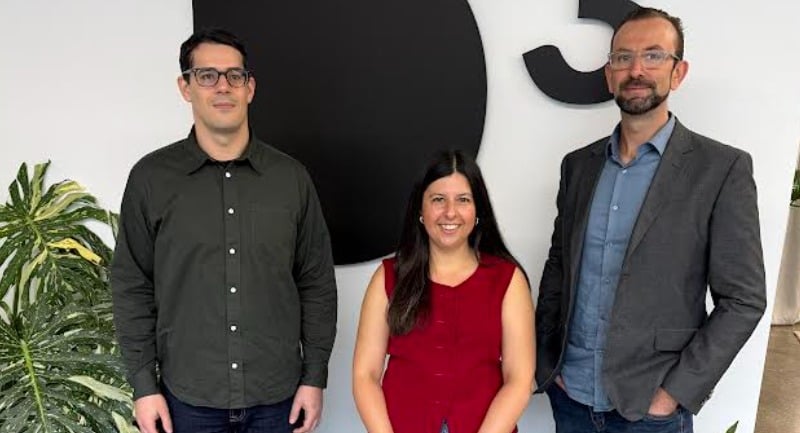
D3 bolsters leadership team with senior hires across data, digital and client services
D3 has strengthened its leadership team with three senior hires, Torsten Stolt as Head of Data & Technology, Alex Duval as Head of SEO & Experience, and Courtney Barnett as Client Partner, marking the agency’s next stage of growth across Australia and New Zealand.
Stolt brings nearly two decades of experience in data strategy, analytics and AI-driven solutions, including five years as Business Intelligence Director at Together. He will lead D3’s data and technology division, focusing on building privacy-safe data foundations and helping brands unlock commercial advantage from first-party data.
Duval joins with more than ten years’ expertise in SEO, CRO and content strategy across independent agencies including Sprocket and Krunch.co. He will oversee D3’s digital content and experience design offering, integrating AI solutions to maximise the value of clients’ organic search and website performance.
Barnett brings both international and local agency experience, having held senior roles at IPG Mediabrands in London and as Group Business Director at GroupM New Zealand, leading accounts such as Uber and Mars. At D3, she will focus on ensuring the agency’s capabilities translate into measurable business outcomes for clients.
The trio join General Manager Lani Jamieson, who stepped into the role earlier this year, alongside co-founders Richard Thompson and Alex Radford. Together, they form an expanded leadership group guiding the agency through continued growth as the industry evolves amid AI, data and connected digital transformation.
Stolt said: “Data has always been central to effective marketing, but the industry is now at a tipping point. Brands need solid data foundations to compete in a world shaped by AI and shifting privacy rules. I’m excited to help D3’s clients move from talking about transformation to making it real — building systems and strategies that create lasting commercial advantage.”
Jamieson added: “Our clients want clarity and confidence as the industry shifts. With leaders like Torsten, Alex and Courtney on board, we’re bringing together the right expertise to guide them through that change. It’s a huge momentum boost for the agency and a reflection of the ambition we share with our clients.”
D3 partners with brands including ZIWI, Milford Asset Management, Metlifecare, NIB, Up Education Group, Rodd & Gunn and The Co-operative Bank, underpinning its continued investment in senior talent and leadership capability.
Top image: Alex Duval, Courtney Barnett & Torsten Stolt
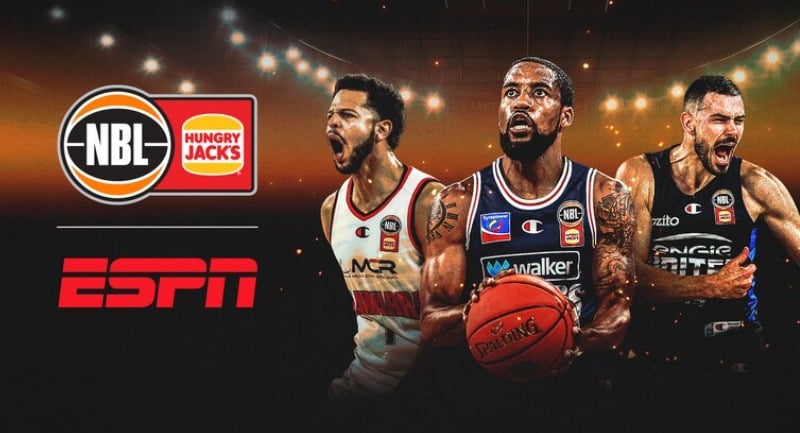
Disney+ signs on as presenting partner for NBL Ignite Cup
Disney+ has been announced as the presenting partner of the inaugural Hungry Jack’s NBL Ignite Cup, launching on October 8 as part of the National Basketball League’s 2025–26 season.
The new mid-season competition will feature 20 Wednesday night games across the regular season, culminating in a standalone Grand Final to be played in a major city yet to be revealed. The Ignite Cup will carry a total prize pool of $400,000 — the largest in NBL history.
The partnership extends The Walt Disney Company’s long-standing relationship with the NBL through ESPN on Disney+, which will stream every Hungry Jack’s NBL game live in 2026, along with all Ignite Cup fixtures and the NBL Finals.
Kylie Watson-Wheeler, Senior Vice President and Managing Director, Australia & New Zealand, and Head of ESPN Asia Pacific, said: “Disney+ is thrilled to be the presenting partner of the Hungry Jack’s NBL Ignite Cup. The Walt Disney Company is a strong and long-standing supporter of the NBL and basketball in Australia. We’re excited to be bringing even more thrilling basketball action to hoops fans through our ESPN network, including Disney+, where it plays alongside the best of premium entertainment.”
David Stevenson, NBL Group CEO, said the partnership represents a major step in growing the league’s reach: “Disney+ is an invaluable supporter of the NBL through our partnership with ESPN, and we are delighted to extend that connection to the Ignite Cup. Their backing ensures that this tournament will reach more Australians than ever before, helping us showcase the best of the league and its players on a national stage.”
With millions of subscribers across Australia and New Zealand, Disney+ is expected to help the NBL attract its largest-ever mainstream audience, furthering the League’s push to expand basketball’s visibility and fan engagement throughout the region.
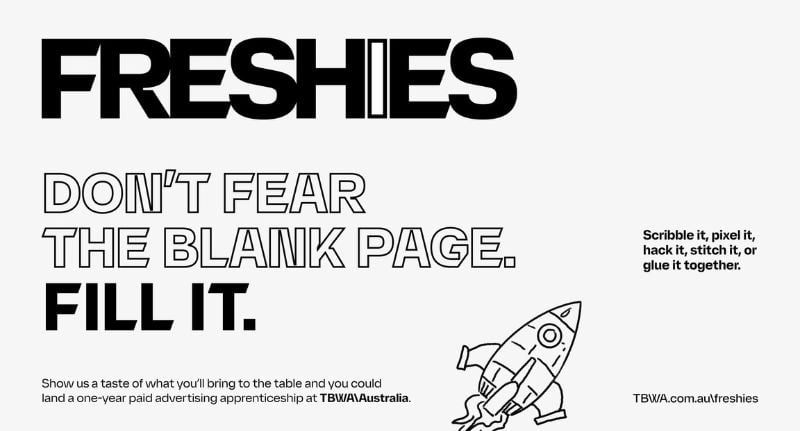
TBWA opens the door to new talent with refreshed FRESHIES program
TBWA\Australia has opened applications for its paid creative agency apprenticeship program, FRESHIES, marking the next evolution of its long-running initiative to uncover Australia’s most curious and unconventional thinkers.
Formerly known as Fresh Fries, the program has been reimagined with a new name, a new look, and a new brief, but it remains grounded in the agency’s core philosophy of disruption.
Now entering its eighth year in Melbourne and its first in Sydney, FRESHIES offers a full-time, 12-month immersion into agency life, rotating through strategy, creative, client leadership, production, and PR.
Since launching in 2018, 80% of graduates have gone on to secure permanent roles within TBWA, making it one of the most effective entry pathways in the Australian advertising industry.
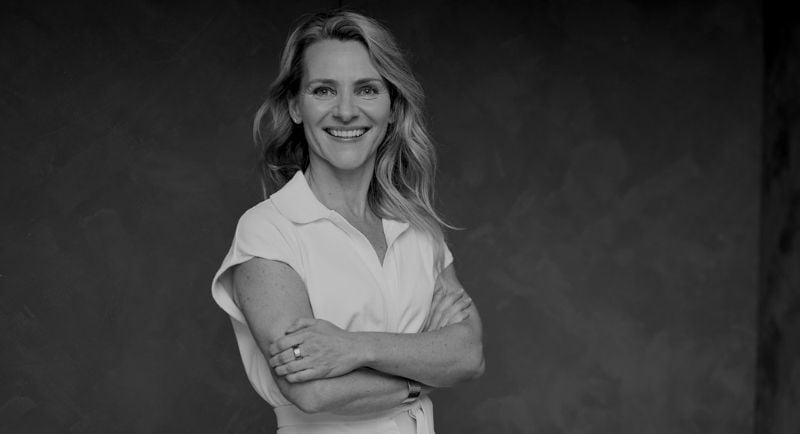
Kimberlee Wells
Don’t fear the blank page
The 2026 brief is straightforward, almost Hemingway-esque: “Don’t Fear the Blank Page, Fill It.” Instead of résumés or polished portfolios, applicants are asked to respond with imagination.
“FRESHIES isn’t about your credentials on paper,” said Kimberlee Wells, CEO, TBWA\Australia. “We want people who see the world differently. People who are hungry to learn, unafraid to disrupt, and who can turn a blank page into something remarkable.”
Shortlisted applicants will be invited into either TBWA\Melbourne or TBWA\Sydney in November for a collaborative group task and interview, a process designed to test creative instincts, not credentials.
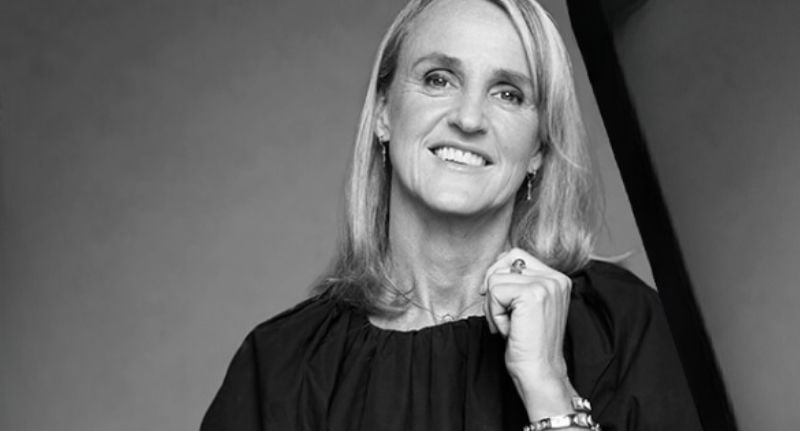
Ricci Meldrum, Managing Director of TBWA\Melbourne
Opening the door to new voices
For Ricci Meldrum, Managing Director of TBWA\Melbourne, the program’s impact goes far beyond early-career experience.
“The program effectively sees FRESHIES take on five new roles,” she said. “It’s an intense, challenging, transformative and rewarding year. You don’t just discover what advertising is, you discover where you belong in it.
“What sets the program apart is that there are no restrictions and no prerequisites. Your curiosity is your main asset.”
In an industry where entry points can be opaque, TBWA is positioning FRESHIES as a direct response to the “no job without experience, no experience without a job” paradox that often deters new talent.
“Too many graduates and career changers hit the same wall: no job without experience, no experience without a job,” said Elektra O’Malley, Managing Director, TBWA\Sydney.
“FRESHIES removes that barrier. We don’t ask for a polished portfolio; we look for potential.”
No industry experience or prior study is required, just “curiosity, courage, creativity and a disruptive outlook.”
Why programs like FRESHIES matter
TBWA’s relaunch comes at a time when national data underscores the need for more structured, accessible creative pathways.
• According to the Graduate Outcomes Survey (QILT 2023), 79% of graduates secured full-time work within four months of finishing study, leaving 21% still seeking employment.
• The ABS Job Mobility Survey (2025) found only 7.7% of Australians change jobs each year, with career-changers facing higher barriers to entry.
• The Creative Workforce Scoping Study (2025) called for more traineeships and mentoring programs to build sustainable creative careers.
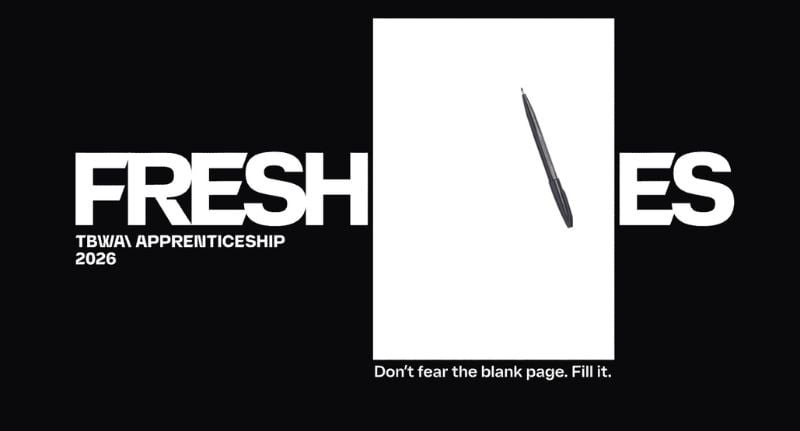
A culture built on disruption
For TBWA, the relaunch is more than a rebrand, it’s a statement of intent.
As Wells put it, the agency isn’t searching for the most polished creatives, but for the ones brave enough to start with nothing but an idea.
“We want people who are hungry to learn, unafraid to disrupt, and who can turn a blank page into something remarkable.”
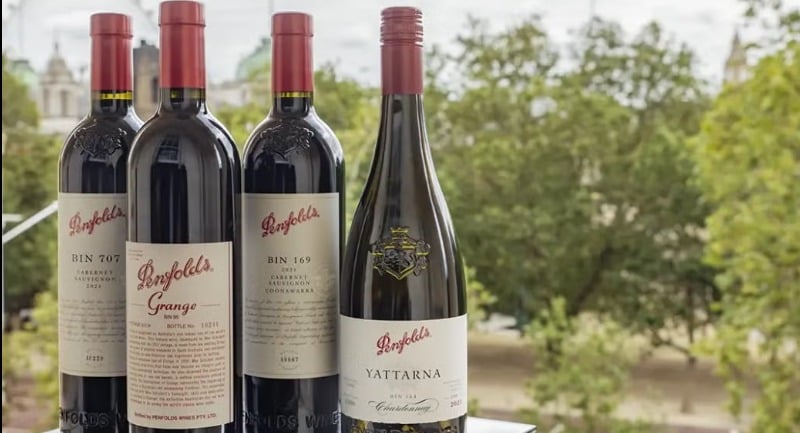
Assembled Media wins Penfolds account
Independent media planning and buying agency Assembled Media has been appointed as the Australian media account management agency for Penfolds, following a competitive pitch process.
The win sees Assembled Media take on one of the country’s most recognised luxury wine brands, further expanding its premium client roster.
The pitch process was designed to test agencies’ strategic and planning capabilities, with Assembled Media standing out for its outcome-focused approach, collaborative culture, and proven track record in driving measurable business results.
A shared spirit of craft and collaboration
“Assembled Media emerged successful from a competitive pitch process designed to test agencies’ strategic and planning capabilities,” the company said in a statement.
Reflecting on the appointment, Gareth Nicholls, Managing Director at Assembled Media, said the agency’s philosophy aligns closely with the Penfolds brand.
“Penfolds is built on the power of blending craft, innovation, and legacy to create something truly memorable,” Nicholls said.
“That spirit of collaboration and commitment to lasting impact aligns perfectly with how we approach partnerships. The whole Assembled Media team are absolutely delighted to be working with such an iconic brand, and it’s a privilege to help shape this next chapter.”

Launching with Penfolds’ 2025 Collection
The partnership has already kicked off with the launch of Penfolds’ 2025 Collection Release, developed in collaboration with Treasury Wine Estates’ in-house digital agency, Splash.
“The integration between Assembled Media and Splash has been seamless. It’s been a true partnership from day one, and a strong foundation for the work to come,” Nicholls added.
The appointment represents a significant milestone for Assembled Media, which continues to attract high-profile brands through a mix of senior-led expertise, agile delivery, and a business-first approach to media strategy.
“This is just the beginning,” Nicholls said. “There’s a lot more to come from this collaboration over the next 12 months and we’re excited to be on the journey.”
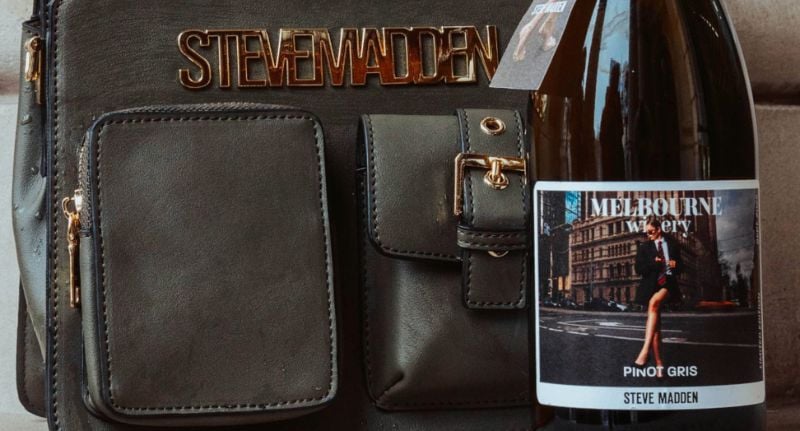
Steve Madden uncorks a new kind of style with limited-edition Pinot Gris
Shoes and wine, two staples many (ahem, this writer) would argue are essential to survival.
Now global fashion icon Steve Madden has combined the two, stepping into the wine world with Melbourne Winery for his first-ever limited-edition Pinot Gris.
Launched in early September, the Steve Madden x Melbourne Winery Pinot Gris (RRP $47) is available in limited quantities online and at the winery’s Flinders Lane venue.
Each bottle is wrapped in a co-designed label that nods to both brands’ DNA, while the campaign imagery, shot on the streets of Melbourne, fuses laneway fashion with the city’s love of food and wine.

Fashion meets fermentation
For Steve Madden Australia’s Marketing Manager, Jamie Kouktzelas, the collaboration is about pushing boundaries while staying true to the brand’s expressive identity.
“We wanted to collaborate on something that felt like an extension of our brand; social, expressive, culturally relevant and hasn’t been done before in Australia to push boundaries and blur lines,” she told Mediaweek.
The goal, she added, was to connect more deeply with the brand’s “urban, glam and style-confident” customer segment through something that “felt like the perfect way to connect with them in a fresh and authentic way.”
A lifestyle where fashion and wine coexist
For Kathryn Mayall, Group Marketing Manager at Barman & Larder, parent company of Melbourne Winery, the collaboration was a natural fit.
“The spark came from recognising that both fashion and wine are about more than products, they shape moments, style, and the way people connect,” she said.
From the outset, Mayall wanted Melbourne Winery to feel more like a fashion label than a bottle shop.
“Even our website was designed to feel more like a fashion brand, closer to Meshki or Steve Madden than a traditional bottle shop, because I always believed wine should sit in the same cultural space as fashion.”
That mindset, she said, is part of a wider cultural shift. “Now, that crossover is everywhere. Hospitality borrows from fashion, fashion borrows from food, and sensory-driven experiences are shaping how big brands like Gucci engage with their audiences.”
Treating wine like a fashion collection
Both brands are treating Concrete Jungle, the campaign name for the Pinot Gris collaboration, as more than a product launch; it’s a lifestyle play.
Kouktzelas said: “We’re treating the Concrete Jungle collaboration with the same creative lens as our footwear campaigns. Strong storytelling mixed with bold visuals and a focus on self-expression. It’s less about product shots and more about capturing a lifestyle where fashion and wine naturally coexist.”
For Mayall, that approach mirrors the way fashion tells stories through experience.
“It’s not just about the visuals, it’s about the experience,” she explained. “Yes, we do bold campaigns and fashion-style shoots, but we also build real moments around it: tarot readings with wine, wine Pilates, wine tastings and bottomless brunches. It’s content and experience working together.”
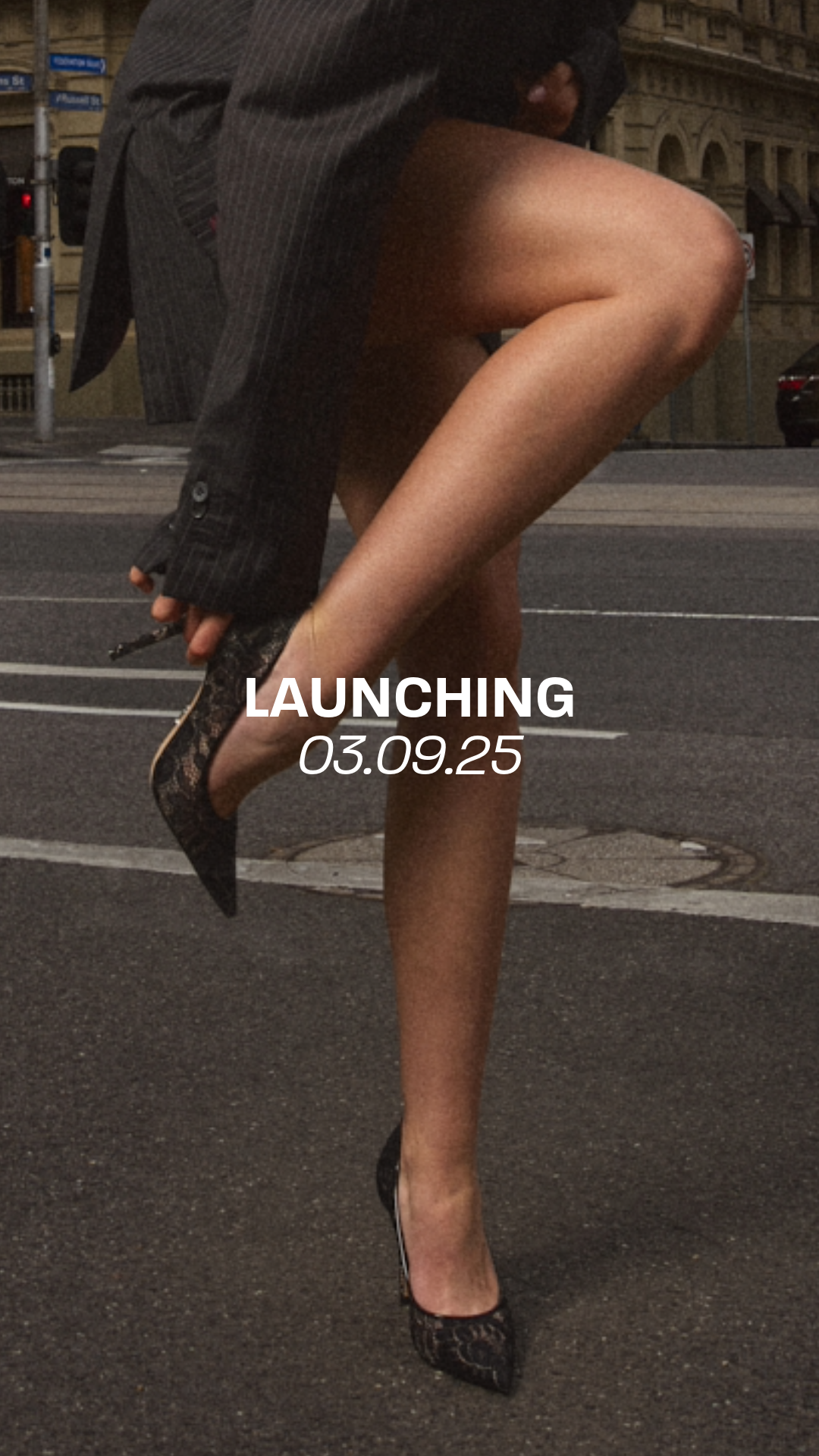
Building cultural relevance across categories
Kouktzelas sees collaborations like this as vital to building cultural equity for both brands.
“Cultural relevance comes from being part of conversations outside your immediate category that resonate to your target market,” she said.
“For Steve Madden and Melbourne Winery, this collaboration places us in new spaces like fashion, dining, nightlife. This way we can both reach audiences in fresh and unexpected ways and create connections in social moments that cement us as not just a product they buy, but as part of the lifestyle they live.”
Mayall agreed, adding that cross-category partnerships open new doors.
“For me, cultural relevance is about showing up in the spaces people already care about, not just selling a product. Collaborations help us do that. For Steve Madden, it’s stepping into lifestyle and hospitality. For us, it’s pulling wine into conversations where fashion is already leading.”
Breaking from tradition
Mayall said the wine industry has long relied on storytelling rooted in heritage, something she’s deliberately reimagining.
“Fashion gives us permission to constantly evolve. Wine, on the other hand, often gets stuck telling the same story, the vineyard, the soil, the barrels. And while that story matters, how many times can you tell it before people stop listening?”
She added: “Taking cues from fashion gives us a new story every time, one that feels fresh, culturally relevant, and easy for people to connect with. The risk of disruption is outweighed by the opportunity to connect with an audience that might otherwise look past wine in favour of spirits, cocktails, or other lifestyle-driven drinks.”
Testing brand stretch and staying authentic
For Kouktzelas, the collaboration doubles as a brand experiment for Steve Madden’s Australian market presence.
“We’ll be tracking brand awareness, social engagement, and brand sentiment across our touchpoints in relation to this collaboration,” she said. “For us right now, the real-time data on these metrics are just as critical as sell-through.”
And while stepping into wine might raise eyebrows, Kouktzelas said authenticity remains front and centre.
“Authenticity comes from staying true to our DNA; bold, boundary-pushing, and unapologetic. This isn’t about becoming a wine brand, it’s about extending the Steve Madden lifestyle into moments that already matter to our audience.”
For both brands, Concrete Jungle is less a one-off experiment than a signal of what’s to come. As Mayall put it: “For us, this is only the beginning, the first of many ways we’ll keep reimagining what wine can be.”
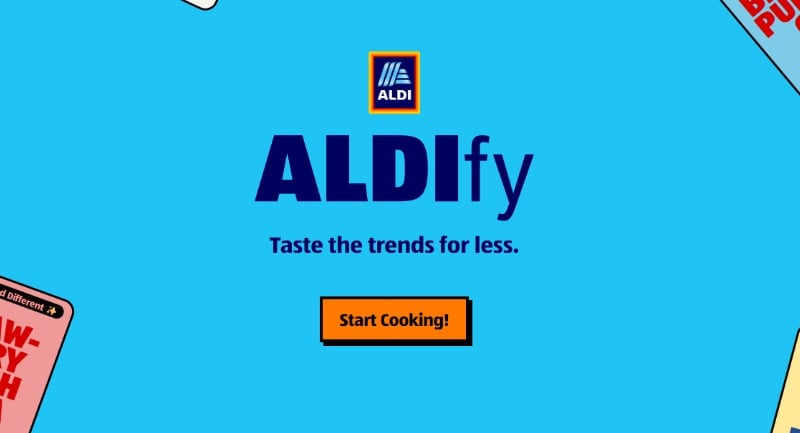
ALDI and Digitas launch ALDIfy to turn viral food trends into shoppable recipes
ALDI Australia has partnered with Digitas Australia to launch ALDIfy, a new digital hub that turns viral food trends into shoppable recipes using ALDI products.
The platform brings together social media-inspired dishes and makes them practical for everyday shoppers. Users can browse trending recipe cards, add ingredients directly to their shopping list, and bring them to life in-store or via the DoorDash app.
The ALDIfy platform and accompanying Taste the Trends campaign were developed through Publicis Groupe’s connected network, led by Digitas and supported by Zenith. The technology uses Publicis’ Cultural Fluency Tool, which identifies emerging food trends online and converts them into culturally relevant recipes featuring ALDI’s range.
Jenny Melhuish, ALDI Marketing Director, said the idea came from consumers’ love of viral food content but difficulty recreating it in real life. “Every week there’s a new food trend lighting up social feeds, but for most people they’re hard to follow and even harder to shop for,” she said. “ALDIfy makes it simple to discover and plan trending meal ideas all in one place.”
Sarah Heitkamp, National Head of Strategy & CX at Digitas, said: “With ALDIfy, we harnessed Publicis Groupe’s connected platform in media, creative, technology and data to make mealtime easier for consumers. It connects online inspiration and real-world accessibility, simplifying the journey from scroll to shop.”
The campaign launches with teaser EDMs targeting socially engaged ALDI shoppers before expanding across digital and out-of-home placements located near ALDI stores. Social amplification and influencer partnerships will bring the recipes to life, showcasing ALDI’s range and driving shareability at scale.
ALDIfy is live now via ALDIfy – Taste the Trends for Less.
Credits:
Digitas
Davy Rennie – Chief Executive Officer
Millie Menage – Chief Client Partner
Sarah Heitkamp – National Head of CX & Strategy
Jade Skinner – Head of Delivery
Natalia Bouropoulos – Senior Business Director
Daniela Gillis – Senior Digital Producer
Claudia Buda – Digital Producer
Penelope Kendall – Project Director
Maarten Kleinsma – Creative Director
Nicholas Duron – Associate Creative Director
Severine Flamand – Associate Creative Director
Lilly Rae – Copywriter
Simon Brock – Executive Creative Director
Martin Holley – Creative Technologist
Srihari Srinivasan – eCommerce Technical Business Analyst / Solutions Architect
Anna Tsud – Senior Frontend Developer
James Hung – Associate Director of Technology
Cong Chu – Email Marketing Specialist
Thao Pham – Digital Designer
Publicis
Maurice Riley – Chief Data Officer
Abbie Price – Data Scientist
Zenith
Jonny Cordony – Managing Director
Ewan Mitchell – Client Partner
Katherine Titley – Group Investment Director
Alice Sinclair – Business Director
Nicola Carnevale – Account Manager
PXP
Kiki Launder – Creative Technology Director
Keep on top of the most important media, marketing, and agency news each day with the Mediaweek Morning Report – delivered for free every morning to your inbox.
Media
LG and Paramount bring Network 10 straight to smart TVs
The Australian’s Jared Lynch writes the pair have teamed up to stream Network 10’s live channels -10, 10 Drama, 10 Comedy and Nickelodeon – directly on LG Smart TVs, no aerial needed.
LG’s Tony Brown said the move reflects viewers’ craving for simplicity.
ABC offers crisis coverage to support local newsrooms
According to TV Blackbox’s Kevin Perry, managing director Hugh Marks said the broadcaster’s 68 sites nationwide, including 58 in regional areas, give it unmatched reach to share coverage of disasters, health emergencies and other critical events.
Apple TV+ hikes prices
news.com.au’s Joshua Haigh writes the service now costs $14.99 a month, up from $12.99, marking its second increase in a year.
Companies
Paramount backs Bari Weiss in $150m CBS News shake-up
Variety’s Brian Steinberg writes the move aims to inject fresh perspective into a legacy newsroom as audiences drift to social media.
The Free Press has about 170,000 paid subscribers, small but loyal – and Paramount’s betting that Weiss’s influence can help bridge old and new media.
Spotify shares drop after Daniel Ek steps down
As Digital Music News’ Ashley King writes the slide followed Goldman Sachs downgrading Spotify from “buy” to “neutral.” Still, shares remain up 55% this year, with analysts saying the dip looks more like a pause than a panic.
Legal
AI
CBA moves core banking to Amazon cloud
The move means about two-in-five national transactions now pass through AWS data centres.
The Australian Financial Review’s James Eyers writes that the 18-month migration aims to boost speed, security and innovation, paving the way for an AI-driven future in banking.
AMD lands multi-year AI chip deal with OpenAI
As Max A. Cherney and Arsheeya Bajwa report for Reuters, the partnership is worth tens of billions annually and giving the ChatGPT maker an option to buy up to 10% of AMD.
Deloitte admits AI errors in $440k government report
The Australian Financial Review’s Edmund Tadros and Paul Karp write that report, commissioned by the Department of Employment and Workplace Relations, was quietly replaced online on Friday with a corrected version.
NSW government ‘sorry’ after flood victims’ data shared with ChatGPT
news.com.au’s Frank Chung reports the data included contact and health information from the Northern Rivers Resilient Homes Program.
Vale
British author Jilly Cooper dies
The Australian Financial Review’s Sylvia Hui writes that Cooper became a literary icon in the 1980s with her Rutshire Chronicles series – a romp through the lives and loves of England’s upper classes that sold millions and redefined the bonkbuster genre.
